It has been 20 years since we first excavated at Abingdon Church following Hurricane Isabel. That storm, which swept through our area in September 2003, cut power and downed trees throughout the region. A particularly large tree fell in the churchyard south of the current Abingdon Church, built c. 1751 to 1755. Its roots dislodged bricks and a portion of wall, leading to a fortuitous phone call from parishioner David Peebles who called on us to investigate. What we found was a damaged section of brick foundation oriented north-south. Could this be part of the earlier church mentioned by a nearby marker in the churchyard?
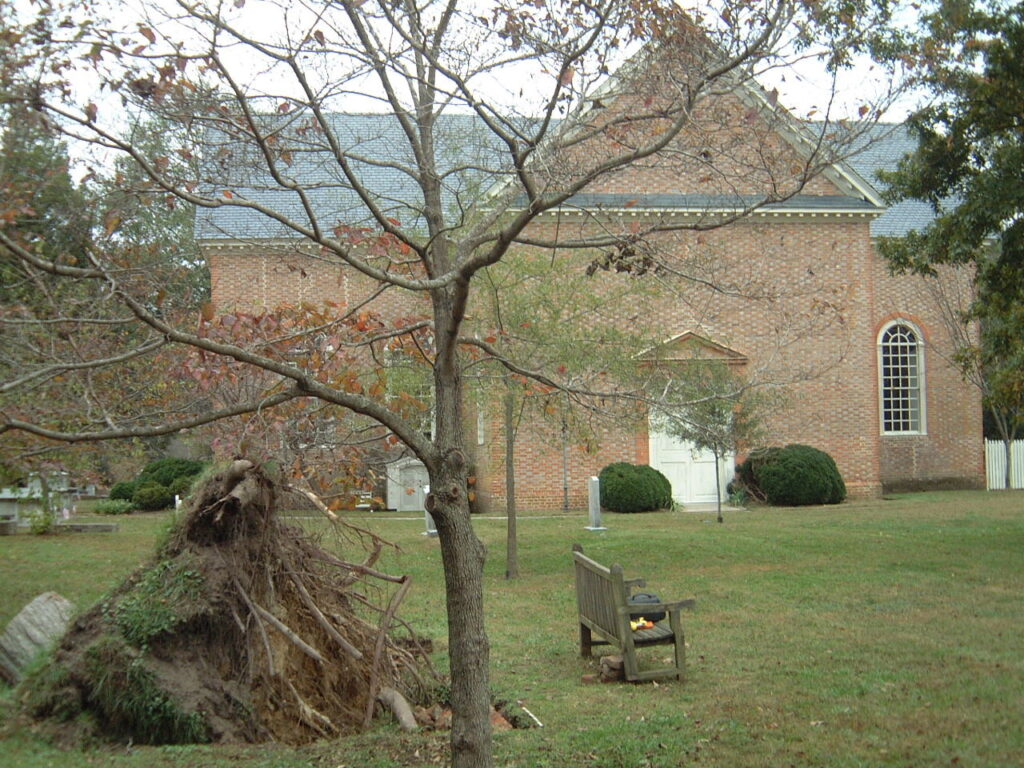
View of the fallen tree from which uncovered a section a brick wall (November 2003).
Using a metal rod and a tremendous amount of patience, we carefully probed for the extent of the wall and determined that it marked the bounds of the earlier, 17th-century churchyard. Knowing that this wall would have enclosed the earlier church, we extended the probing survey and found evidence of a rectangular brick structure within the smaller, earlier churchyard. As with many archaeology projects, we talked with the congregation, wrote up a summary of our findings (including a detailed map of the southern churchyard), and hoped to return some day. Twenty years later and that time has come.
Excavations in April 2023 in search of the earlier church foundation (l to r: Evan Cabral, Artemis Harpole, bobbi hatton, and Thane Harpole).
Last spring we began a three-year project in collaboration with Abingdon Episcopal Church to document evidence of the predecessor to the magnificent Georgian church that stands today. Building on our previous work, we are uncovering clues that are revealing why elite planter and politician William Byrd II described this as “the best church I have seen in the country” in 1709. The project includes two public excavation days each spring and fall from 2023 to 2025, with opportunities to see and participate in the ongoing archaeology.
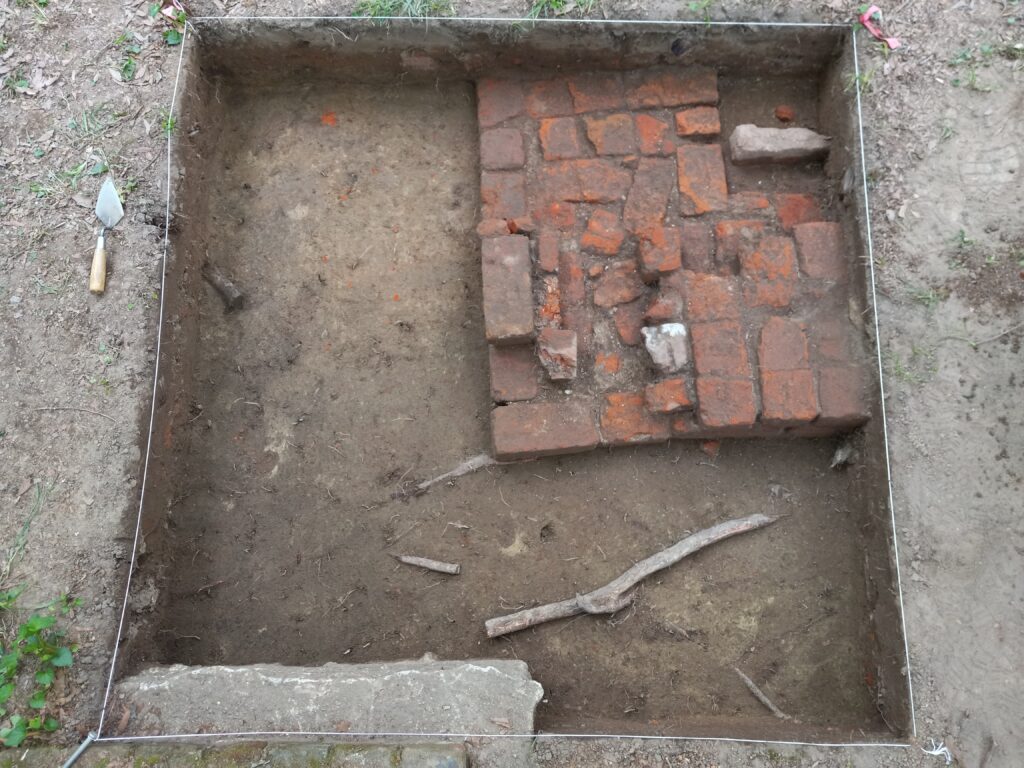
Starting with a list of basic questions about the earlier church, we began excavations in April 2023 with the goal of identifying the southwest corner and the north wall. Almost immediately we found colonial tobacco pipe fragments and very thin sherds of window glass, followed by large handmade bricks forming a corner (image above). With just a few days of excavation we confirmed the east-west orientation of a rectangular church measuring approximately 64 feet long by 29 feet wide. The bricks are all handmade, likely made on the site, and bonded with lime mortar. The foundation is between 2 and 2.5 feet wide, which was wide enough to support the tall straight walls of the church. Based on the research of renowned architectural historian Carl Lounsbury on Virginia’s colonial churches, the dimensions match quite closely with those of St. Luke’s Church (c. 1682) in Isle of Wight County, the earlier Bruton Church (c. 1681-3) in Williamsburg, and St. Peter’s Church (1701-3) in New Kent County, which are all contemporary with this Abingdon Church. Just before Christmas, we spent an extra day on site and confirmed the presence of a brick buttress along the south wall. Buttresses have been found on those same churches, and it was exciting to confirm another detail that was not commonly found after the 17th century.
As we continue this project, we have many more questions: what was the size and location of additions or other changes to the structure? where were the doorways? were there paved aisles? and what other architectural details made this church exceptional. We are seeking clues to the construction date of the building and hope to recover evidence of the many people who worked on the building, including enslaved and indentured laborers. Personal and domestic artifacts are not very common at church sites, but these objects can tell us about people who visited the site from the mid-17th century to the present. Several intriguing artifacts found so far include decorative bricks used on the church or surrounding wall. A decorative mullion brick (above) would have formed part of the frame for a large casement window, perhaps similar to those at St. Luke’s, or those at the c. 1530 St. Nicholas Church in England pictured above. This style of church is remarkably different from the large and restrained Georgian style churches that we all know and love. Another curious artifact from the 2004 excavations was a circular, fired clay object (pictured below), which appears to be a decorative sphere. An early sketch of the earlier Bruton Church (below) shows a sphere or ball decorating the entrance to their churchyard. We are excited to have found evidence of similar whimsical architectural details at Abingdon. What other features of this building will we uncover?
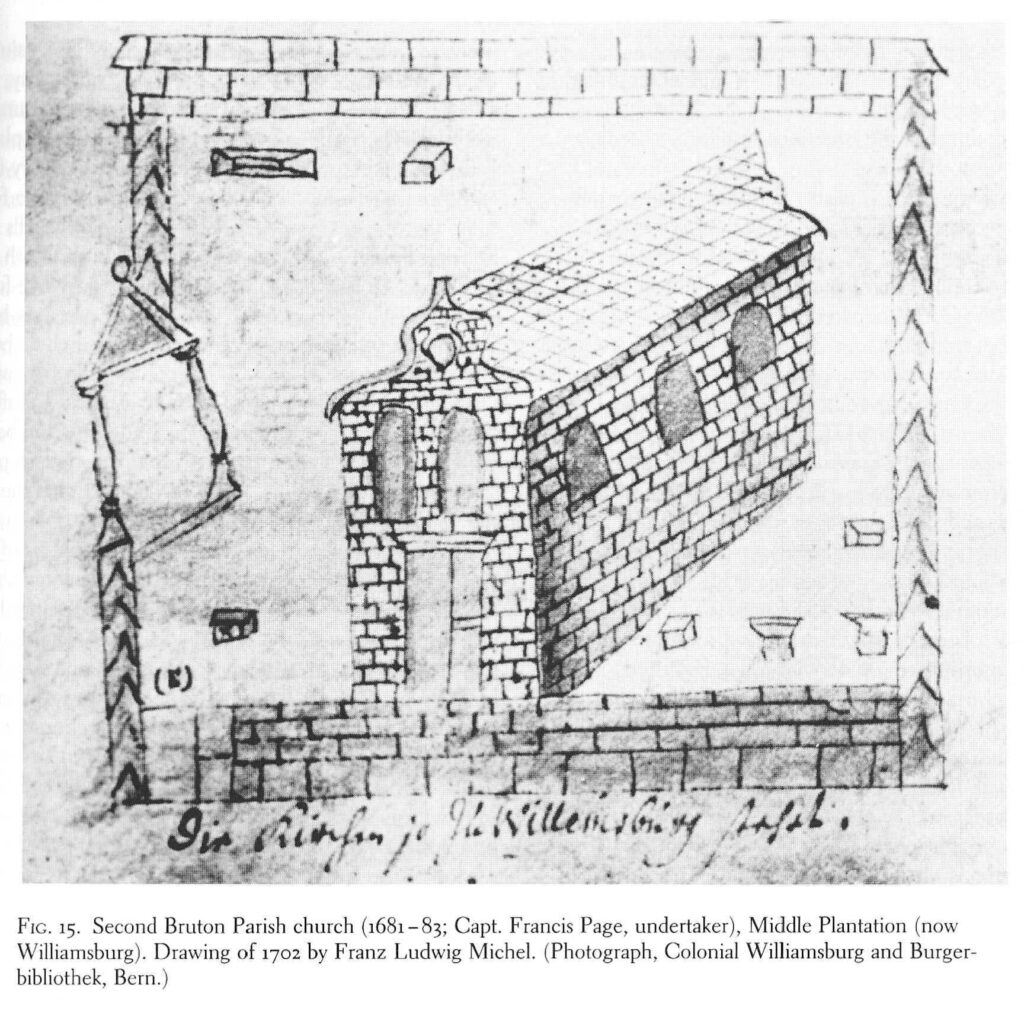
This work will help us better understand the evolution of church architecture across Virginia, and how it influenced the development of Gloucester County. It will also assist Abingdon Episcopal in telling the story of their church and preserving this legacy. This early brick church was certainly an impressive sight in late 17th-century Gloucester, standing solitary along the ’Greate Road’ between the major plantations of Warner Hall and Fairfield. This building played an important role in the community for at least half a century. We are planning to return in the spring of 2024 to continue the search for more telling evidence of this building and encourage everyone to come by, ask questions, and get their hands dirty.
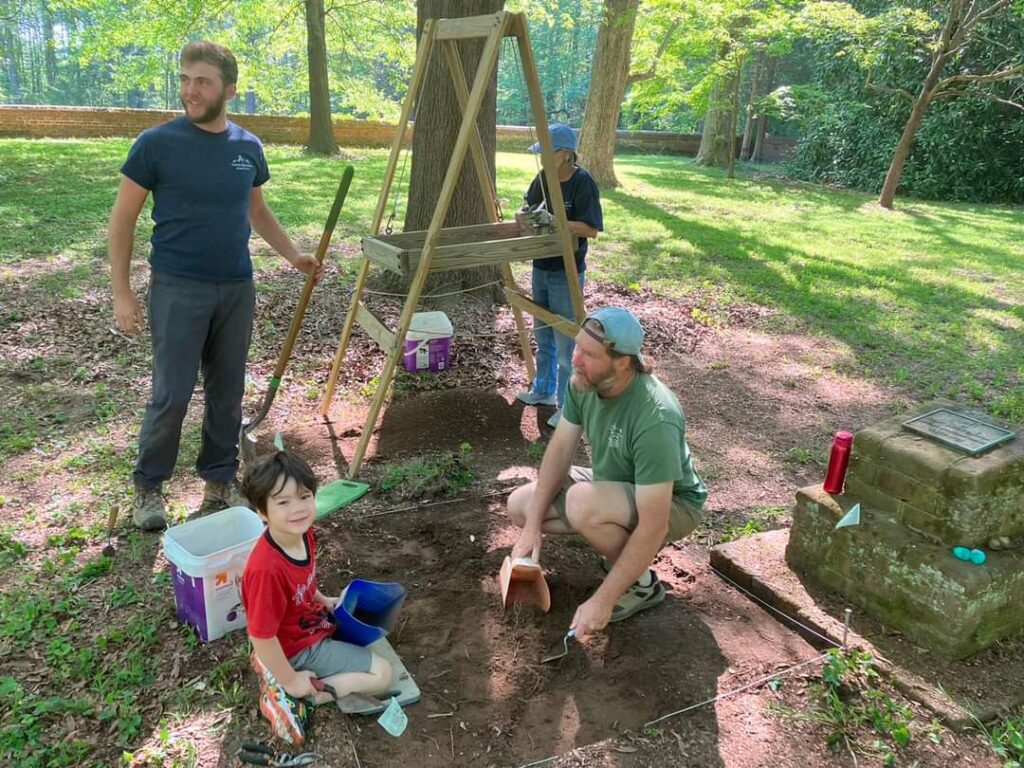
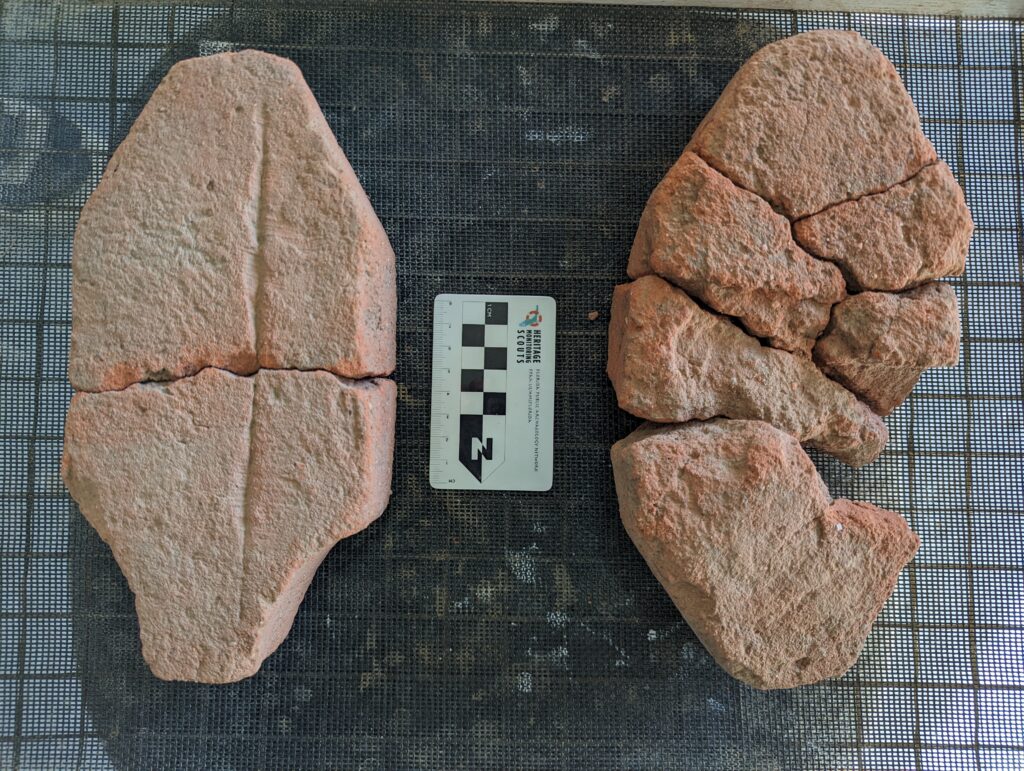


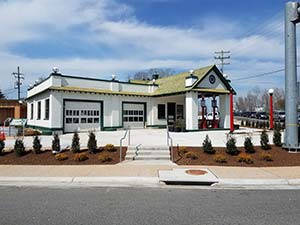

When my life settles a little, I’ll poke around in my files and see whether I have anything useful.
I have not verified this, but a few years ago, a renter at Eagle Point Plantation was boating around the west side of Eagle Point and claims to have seen a window/placque with Abington Church written/carved on it in one of the small coves into Eagle Point. If any interest, I can check with property owner to get more exact location information, as I live next door. Perhaps winter time is best time to go look due to lower tides and clearer water?
Thanks for the comment. We would be very interested in anything that mentions or relates to Abingdon Church. If you find anything out we would happy to come check it out. Thanks!
As one of the army of descendants of the Pages and Burwells, reading this posting brought me great pleasure. I will share this with my children and grandchildren and a cousin or two who may not be aware of the Fairfield Foundation. Thanks so much for the wonderful work you do. I will look forward to learning more of your discoveries about the previous Abingdon church!
Thanks for spreading the word! This has been a fascinating project and we look forward to the excavations coming up this spring.
What a fascinating development. It looks like you may be working on this for a long time.
Ahhh….great memories and time to make new ones!
and time to make new ones!
We’re looking forward to some exciting excavations this spring!